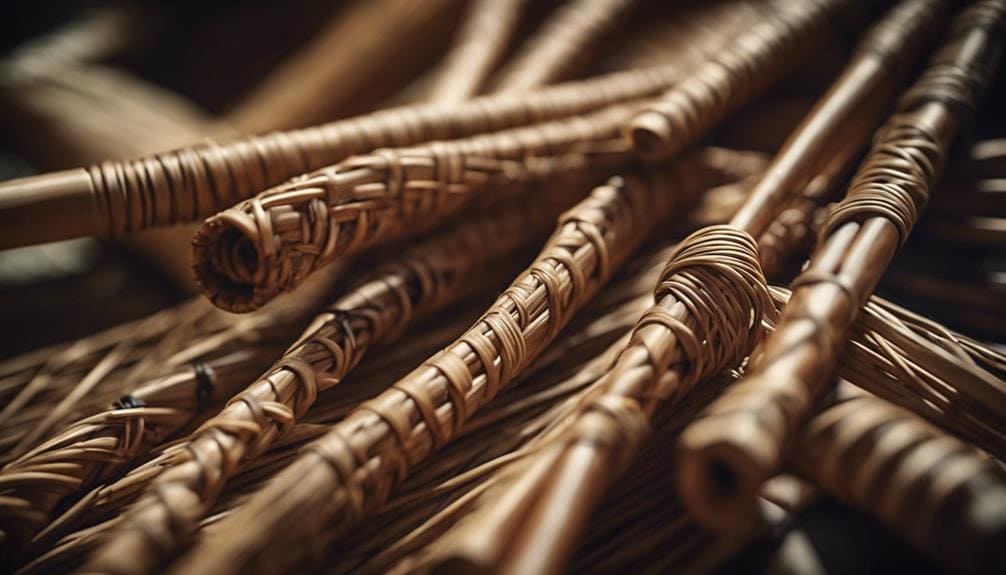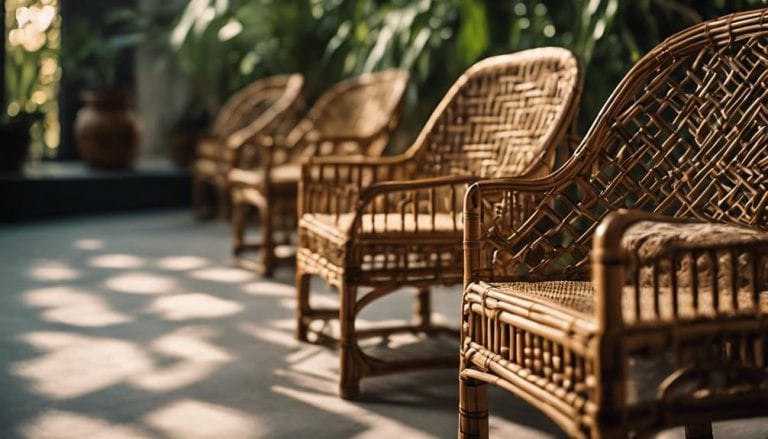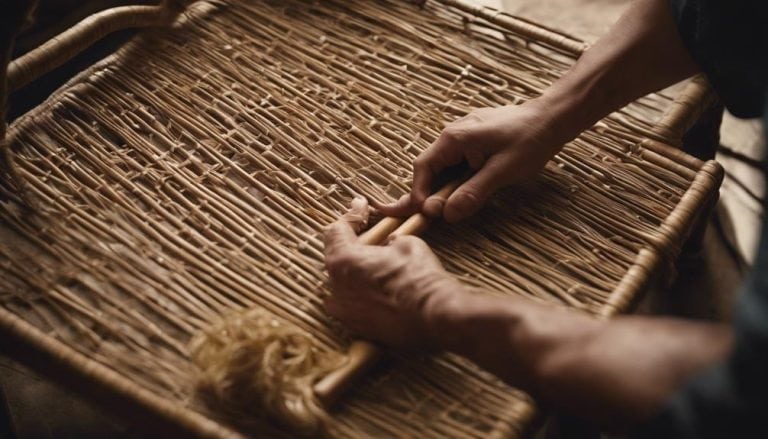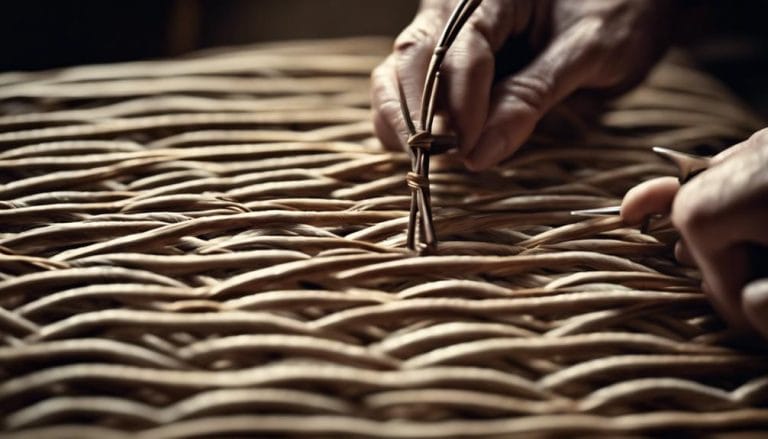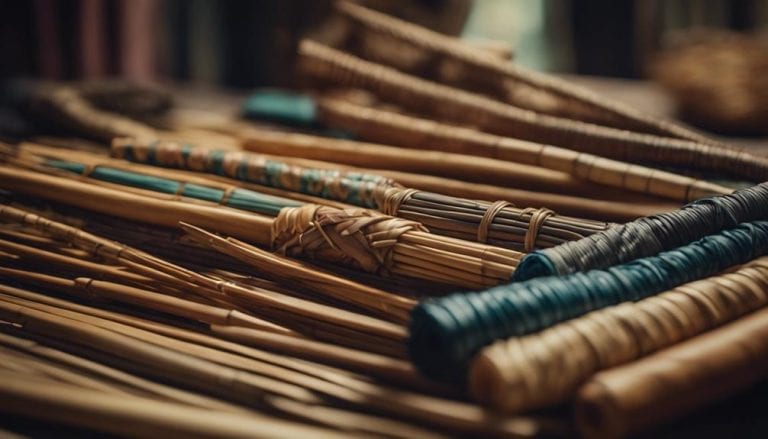Rattan Cane for Weaving: Expert Advice
In my years of weaving, I’ve cut, soaked, and woven rattan cane into countless pieces, each with its own story and charm. This journey has taught me that working with rattan isn’t just about the technique; it’s about understanding the material’s soul.
Despite its durability and flexibility, many are unaware of the nuances that can turn a good project into a great one. From selecting the right grade of cane to mastering the tension that gives each weave its strength and beauty, there’s much to consider. Stick around, and I’ll share some insights that could transform your approach to using rattan cane for weaving.
Rattan cane is a versatile material for weaving, offering flexibility and durability for various projects. Expert advice on using rattan cane can help enhance your weaving skills and create beautiful, long-lasting pieces.
Key Takeaways
- Selecting high-quality rattan cane ensures durability and ease of maintenance for weaving projects.
- Understanding basic to advanced weaving techniques enhances creativity and the structural integrity of designs.
- Proper care, including regular cleaning and protection from harsh elements, extends the lifespan of rattan crafts.
- Sourcing materials from reputable suppliers guarantees the strength and flexibility required for intricate weaving.
Understanding Rattan Cane
Delving into the world of rattan cane, we uncover its remarkable flexibility and strength, derived from the outer skin of the rattan palm plant, a cornerstone for weaving projects. Its durability and flexibility aren’t just words to me; they make rattan an irreplaceable material in my creations. Having worked with various materials over the years, I’ve found that rattan’s resilience and malleability allow for a diverse range of evolving weaving styles and trends.
The trends in rattan weaving styles are fascinating, blending traditional techniques with modern aesthetics. As someone deeply embedded in this craft, I’ve observed how these styles adapt over time, reflecting cultural shifts and consumer preferences. Rattan’s natural look and eco-friendly attributes also play a significant role in its popularity, especially among those seeking sustainability without compromising style.
What truly sets rattan apart for me is its minimal maintenance requirement. This ease of care ensures the longevity of pieces crafted from rattan, making it a cost-effective choice for artisans and consumers. The lightweight, weather-resistant nature of rattan further enhances its appeal, offering functionality alongside beauty.
Selecting Quality Materials
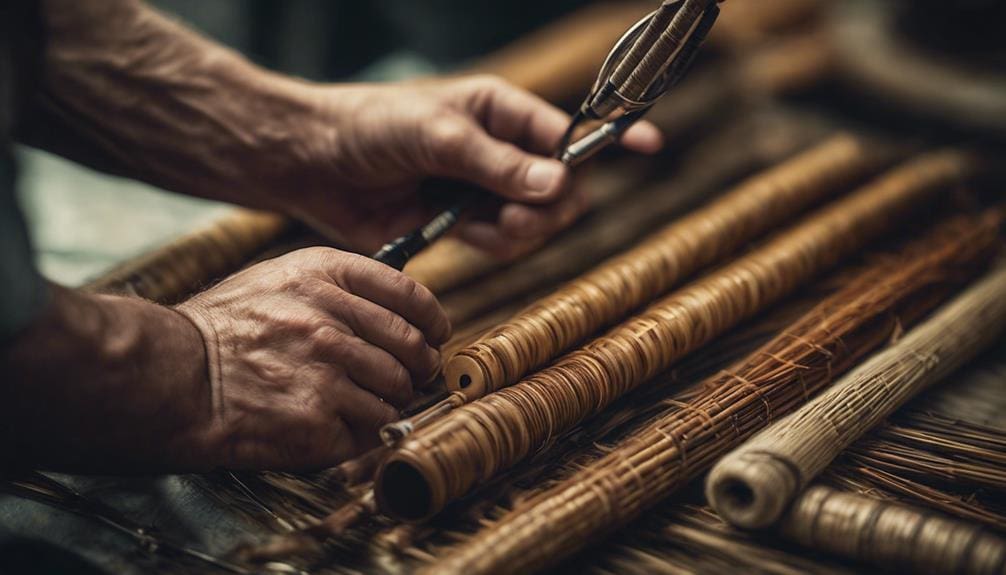
Choosing the right quality rattan cane is crucial for ensuring your weaving projects are beautiful but also durable and cost-effective in the long run. My years of experience in this craft taught me that not all rattan is created equal. The material characteristics significantly affect the weaving process, making it essential to select wisely.
- Material Characteristics: Look for rattan cane that is strong, flexible, and less porous. Its natural durability requires minimal treatment, making it ideal for intricate designs. This ensures ease of weaving and long-lasting results.
- Supplier Options: Not all suppliers offer the same quality. It’s important to source your materials from reputable suppliers known for their high-quality rattan palm plants. This can make a significant difference in the outcome of your projects.
- Budget Considerations: While cost is always a factor, investing in high-quality rattan cane proves more cost-effective due to its durability and easy maintenance. Don’t compromise on quality for short-term savings; consider the long-term benefits.
Basic Weaving Techniques
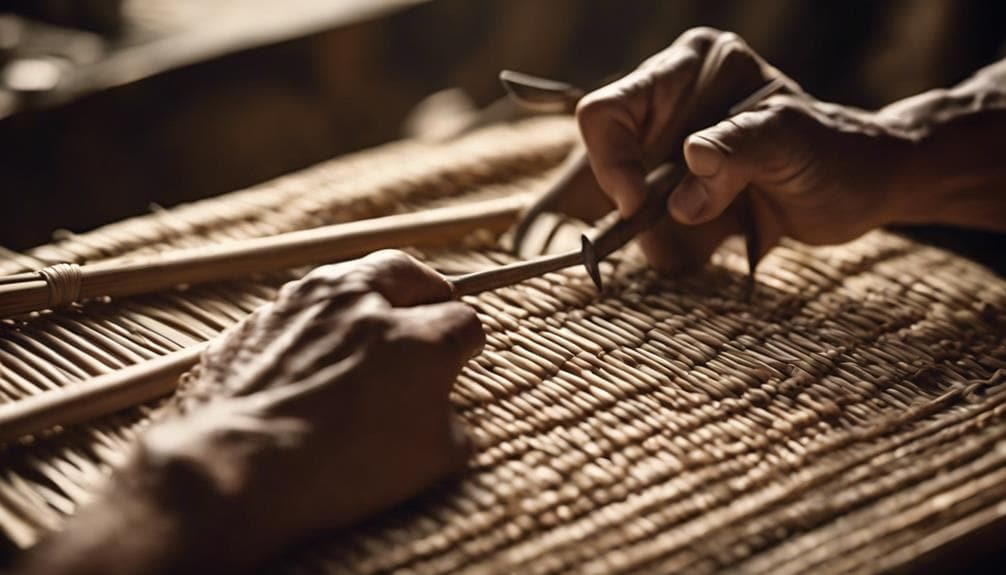
Having selected the right quality rattan cane, it’s crucial to master the basic weaving techniques to bring our projects to life. The over-under weaving pattern forms the foundation of all rattan cane weaving. This pattern creates a beautiful aesthetic and ensures the structure’s strength and durability.
When I first started, understanding how pliable rattan becomes when soaked was a game-changer. It allows for more intricate designs without the material breaking. However, maintaining even tension throughout the weave is critical. Too tight, and the rattan may snap; too loose, and the finished product won’t hold its shape.
For beginners, I always recommend starting with simple patterns. Practice exercises are invaluable here. They not only help you hone your skills but also help you understand the material’s nuances. And yes, you’ll run into issues. Whether it’s uneven tension or misaligned patterns, troubleshooting tips like checking each row for consistency and adjusting tension as you go can save a project.
Advanced Weaving Patterns
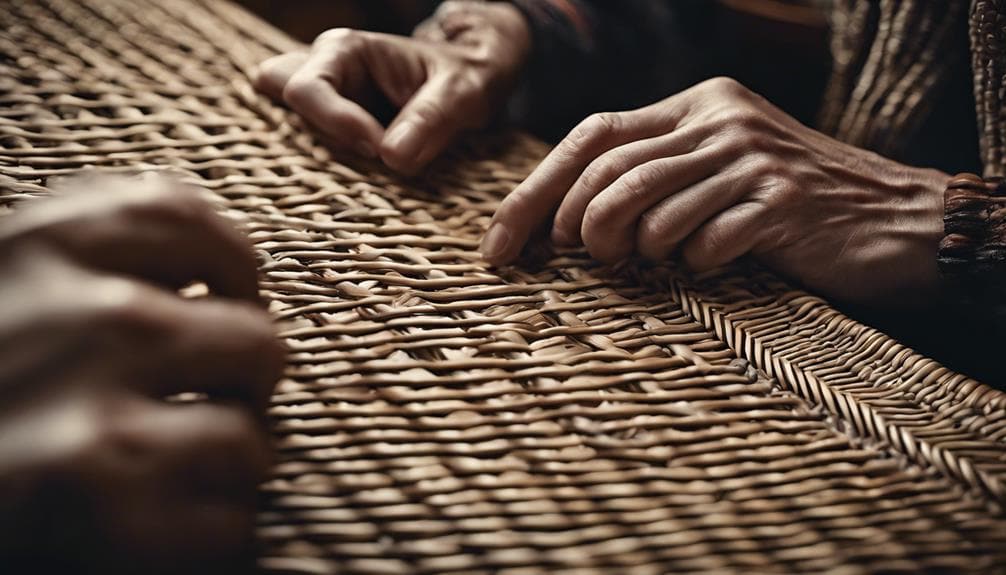
Exploring advanced weaving patterns, such as herringbone, twill, and diamond twill, requires a deep understanding of the versatility and precision of the rattan cane. As I’ve advanced in my weaving journey, I’ve discovered that these intricate techniques are not just about following patterns; they’re about expressing creativity and achieving a professional finish that stands out.
The satisfaction of mastering these patterns is unparalleled, offering both a challenge and an opportunity to push the boundaries of what can be created with rattan cane.
- Creative designs breathe life into projects: By incorporating unique patterns and artistic motifs, my work looks more complex and tells a richer story. Each piece becomes a canvas for expression, inviting viewers to explore the depth of craftsmanship.
- Intricate techniques demand precision: The attention to detail required for advanced patterns like herringbone and diamond twill has sharpened my skills, making my approach more meticulous and patient.
- Artistic motifs make each piece unique: By weaving unique patterns into my projects, I ensure that every creation stands out, showcasing a blend of tradition and personal innovation that captivates the audience.
Exploring these advanced patterns has truly elevated my work. I blend artistry with technique to create stunning rattan cane pieces.
Care and Maintenance Tips
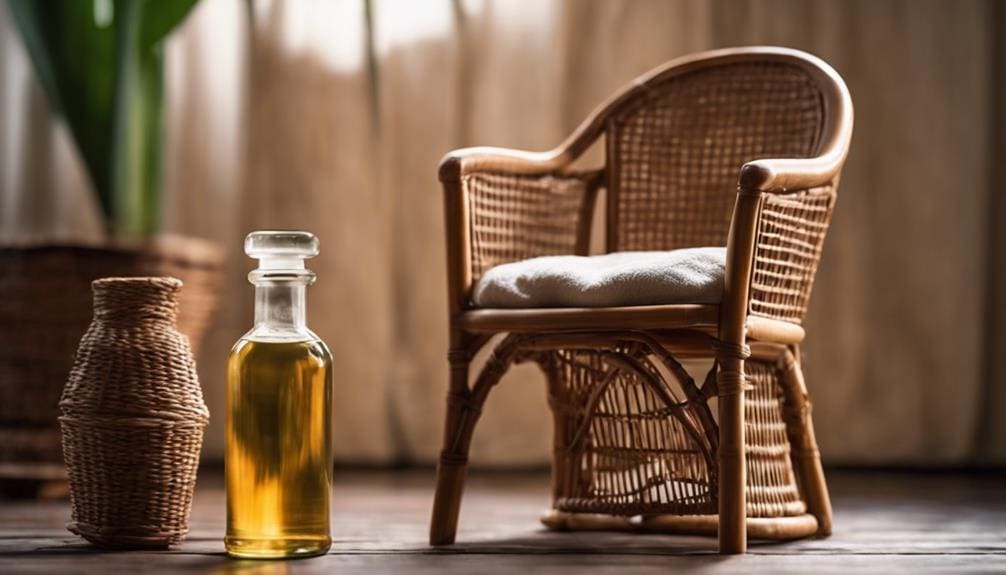
To ensure your rattan cane creations remain pristine, it’s essential to adopt a routine of careful cleaning and maintenance. I’ve found that using a soft cloth dampened with mild soap and water is the best method to remove dust and dirt without harming the natural fibers. It’s crucial to avoid harsh chemicals or abrasive cleaners, as these can cause irreversible damage.
Keeping rattan cane furniture away from direct sunlight and heat sources is vital in preventing drying, cracking, and discoloration. I’ve learned that periodically applying clear furniture wax can significantly aid in maintaining its natural luster and protecting it from moisture. This technique has been a cornerstone in my preservation methods.
Moreover, storing your rattan cane furniture indoors during extreme weather conditions can greatly prolong its lifespan and prevent potential damage. In my experience, adhering to these cleaning techniques and preservation methods keeps your rattan cane looking fabulous and minimizes the need to repair damage. Remember, a little care goes a long way in ensuring the beauty and longevity of your rattan cane creations.
Frequently Asked Questions
How Long to Soak Rattan Before Weaving?
Soaking rattan for about 30 minutes in warm water works best. It doesn’t just prevent breaking; it ensures smooth weaving. After washing, using effective drying techniques is crucial for maintaining its flexibility.
How Do You Prepare Rattan for Weaving?
To prepare rattan for weaving, I soak it in warm water, then straighten and trim it. I also focus on cleaning and employ specific drying techniques to keep it pliable, ensuring smooth weaving.
Is There a Difference Between Rattan and Cane?
Yes, there’s a difference between rattan and cane. Rattan’s origins trace back to a vine-like palm, while cane’s durability shines in its processed, woven form, perfect for crafting durable, intimate designs.
Why Do You Soak Cane Webbing?
I soak my cane webbing to make it malleable, ensuring it doesn’t sag during weaving. This step is key for intricate designs, preserving the cane’s quality and refining my weaving techniques for a professional finish.
Conclusion
I’ve spent countless hours weaving with a rattan cane, and what stands out is its incredible resilience. Did you know that a well-maintained piece of rattan furniture can last up to 15 years or more? That’s a testament to its durability. Following expert advice on selecting quality materials and mastering basic and advanced weaving techniques ensures your projects look stunning and stand the test of time. Remember, regular care keeps your rattan creations looking fresh and extends their lifespan significantly.

